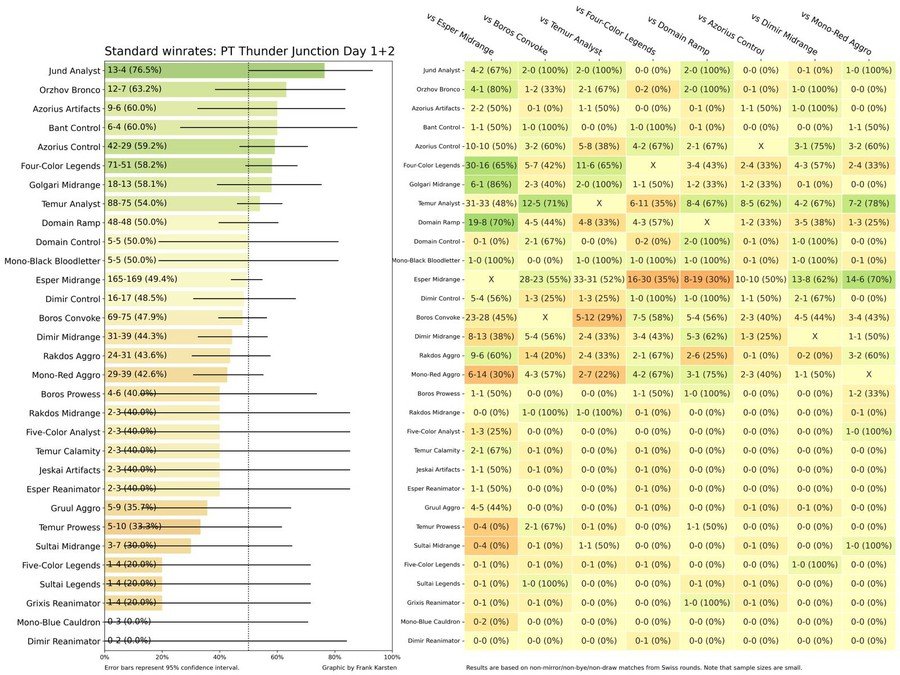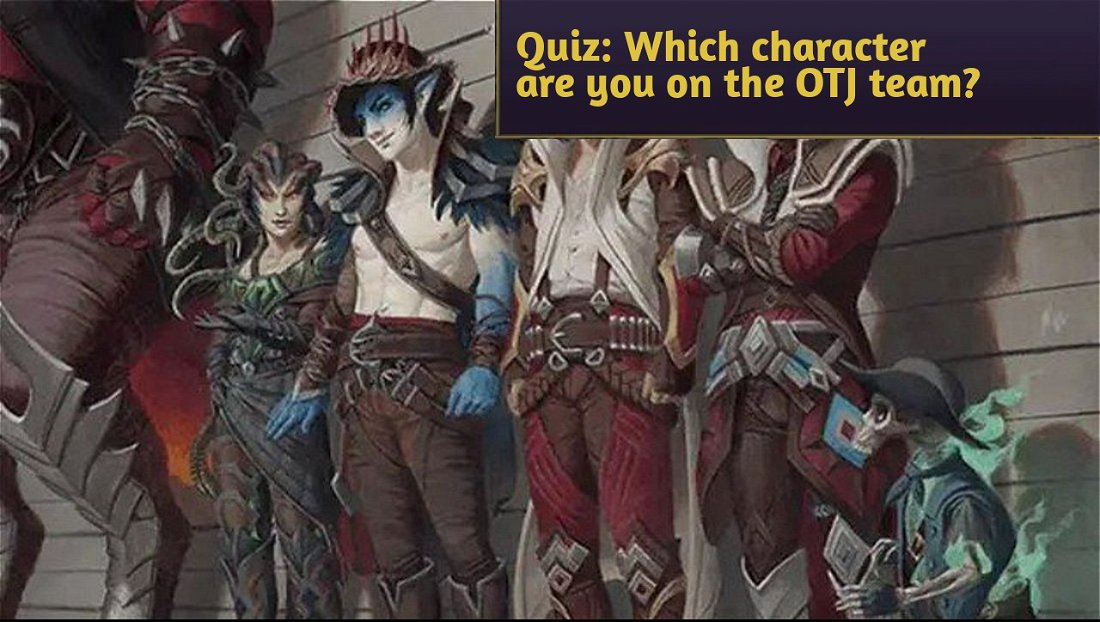The Pro Tour Outlaws of Thunder Junction came to an end with the victory of Yoshihiko Ikawa, with Domain Ramp - a strategy consolidated in format since the start of this season due to the high-power level of Atraxa, Grand Unifier.
But Ikawa's victory is just one of several highlights of the event, which had a dozen new features in terms of decks, proposals and changes to the Metagame, reflected mainly by the winrates of each archetype during the Swiss rounds.
Ad

In this article, we use the results of the Pro Tour to identify which strategies benefited most from the event and how their win rates and representation can change the competitive landscape of the format in a larger scope, where there are only a few months left until the next rotation!
Esper Midrange is still a great choice
Esper Midrange was the safe choice for over 30% of players for the tournament - a symptom of both the lack of time to test new cards before the Pro Tour and the high popularity of the archetype, which has remained one of the main competitors of the Metagame since the past season.
Being the safe choice also means being the main target and impediment to the other archetypes present in the format, where every player needed to consider the Esper Midrange matchup when putting together their list, and despite its win rate just below 50%, we can say Esper remains one of the format's most solid choices.
After all, we witnessed similar situations in other events, such as the Pro Tour Murders at Karlov Manor, where Rakdos Midrange had a very low win rate due to being heavily targeted by opponents, causing them to dedicate a lot of space in their list to dealing with it, or opting by archetypes that have a favorable matchup against it.
Esper Midrange, on the other hand, managed to remain a firm and consolidated strategy, and consequently, proves itself as a great deck for those who want good results in a more open Metagame, but its dominance in the format could undergo sudden changes with the rise of Four-Color Legends after the Pro Tour.
Still, even if it's not always at the top, this will be one of the most competitively viable decks in the format as long as Raffine, Scheming Seer remains legal in Standard.
We need to respect Analyst decks
Another highlight from Pro Tour Thunder Junction was the rise of a new variant of Aftermath Analyst decks in Jund colors, and both versions had excellent results in the tournament.
With Jund Analyst having the highest winrate on the Pro Tour, it is expected that it will grow and become one of the decks to beat in Standard in the months preceding Bloomburrow and the rotation, and its full combo theme focused on interaction between Pitiless Carnage and Splendid Reclamation can take over games on its own if not put in check.
Temur lists demonstrate similar and sufficiently consistent results to make these the main combos in the Standard competitive scene, possibly demanding more specific answers in Sideboards in the coming months, such as the recently released Rest in Peace or more specific cards to deal with its win conditions.
Control is back, but may suffer with the new Metagame
After spending the entire season having problems at keeping up with the rest of the format, Azorius Control finally gained traction in Standard to be one of the main decks in the format thanks to the specific additions that the last two sets brought to the archetype with No More Lies, Deduce and Three Steps Ahead, giving it greater flexibility and reach to keep opponents in check for longer.
Ad
Azorius Control has the right tools to handle most established pre-Pro Tour strategies, but as exemplified by the finals match between Yuta Takahashi and Yoshihiko Ikawa, go big archetypes like Domain Ramp or Analyst pose a huge challenge as they benefit even more from long games, especially with Cavern of Souls or high amounts of recursion that make it impossible to follow without more card advantage and inevitability.
These are difficult times for Aggro
Except for Boros Convoke, which performed better than expected in an environment where Pest Control was one of the most played cards of the tournament, the other Aggro decks in the format - led by the various variants of Red-Based Aggro with Slickshot Show-Off had less than impressive results on the Pro Tour.
These results are due to the format being in a period much more focused on the axis between attrition decks such as Esper Midrange or Azorius Control in opposition to value decks such as Domain Ramp and Analyst variants, in addition to other Midranges whose plan involves interacting with the opponent with removals and 2-for effects, giving little space to archetypes that seek to play under.
As long as strategies like Domain Ramp or Four-Color Legends remain among the main competitors, Red-Based Aggro will be viable options to prey on them, helping to maintain the Metagame's balance. However, its results against other archetypes weren't very encouraging.
A new era of combos begins?
Between the rise of Four-Color Legends with Honest Rutstein, Jund Analyst's notorious winrate on the Pro Tour and the popularization of the Orzhov Bronco following its results on the first day of the event, it is to be expected that the coming weeks will leverage the combo archetypes in ranked matches, Challenges and independent tournaments.
Due to its high interactivity with the battlefield, ability to create highly explosive turns with Relic of Legends and its high customization factor, it is likely that Four-Color Legends will be the main archetype most explored by players in the coming weeks, making it even more difficult to interact with, but helping to keep Azorius Control and other archetypes with sweepers on the format's radar.
Another strategy that stood out in the Pro Tour and even won one of this weekend's Challenges was the Orzhov Bronco, which takes advantage of the interaction between Caustic Bronco and Shadow of Mortality to deal 15 damage to the opponent the moment the creature attacks while pursuing an aggressive Midrange stance.
It wouldn't be a surprise if new variants of this deck appeared in Standard and even Pioneer, where this mechanic can be better used in other shells, in addition to offering a quick victory without many clicks or micro-interactions to make it work.
Conclusion
That's all for today!
If you have any questions or suggestions, feel free to leave a comment!
Thanks for reading!
Ad









— Comentarios0
Se el primero en comentar